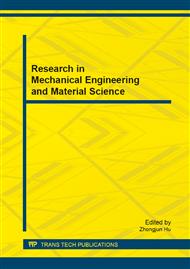p.482
p.486
p.490
p.494
p.498
p.503
p.507
p.512
p.517
Recognition and Control of the Influence Factors on the Surface Defects of Cold Rolled Strip with Emulsion Lubrication
Abstract:
In cold rolling, good surface quality should be maintained with the requirement of constant increasing productivity. Oil-in-water (O/W) emulsions are widely used in cold rolled strips due to their good characteristics as lubricants and coolants. The strip surface defect is one of the central quality problems in the rolling process. A poor strip surface quality after cold rolling may have a large impact on the downstream process, like annealing, galvanization and painting. The surface condition could be deteriorated in many forms affected by various factors. However, few reports focused on the effect of the lubricating property of emulsion on the final surface quality. In this paper, the general surface defects of cold rolled strips such as watermark defects, black spot defects, heat scratches and corrosion defects were analyzed by scan electron microscope (SEM) and energy spectrum analysis (EDS) and the morphology and composition of the defects have been researched. The reason of the surface defects generated is analyzed, and the factors which introduce the surface defects during rolling process are presented. Therefore, it has an important significance to identify the features of the surface defects and put forward the solution measures.
Info:
Periodical:
Pages:
498-502
Citation:
Online since:
October 2013
Authors:
Price:
Сopyright:
© 2014 Trans Tech Publications Ltd. All Rights Reserved
Share:
Citation:


